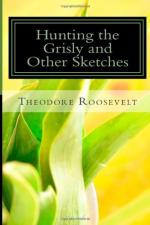In no place in the Northeast is hunting the wild red fox put on a more genuine and healthy basis than in the Geneseo Valley, in central New York. There has always been fox-hunting in this valley, the farmers having good horses and being fond of sport; but it was conducted in a very irregular, primitive manner, until some twenty years ago Mr. Austin Wadsworth turned his attention to it. He has been master of fox-hounds ever since, and no pack in the country has yielded better sport than his, or has brought out harder riders among the men and stronger jumpers among the horses. Mr. Wadsworth began his hunting by picking up some of the various trencher-fed hounds of the neighborhood, the hunting of that period being managed on the principle of each farmer bringing to the meet the hound or hounds he happened to possess, and appearing on foot or horseback as his fancy dictated. Having gotten together some of these native hounds and started fox-hunting in localities where the ground was so open as to necessitate following the chase on horseback, Mr. Wadsworth imported a number of dogs from the best English kennels. He found these to be much faster than the American dogs and more accustomed to work together, but less enduring, and without such good noses. The American hounds were very obstinate and self-willed. Each wished to work out the trail for himself. But once found, they would puzzle it out, no matter how cold, and would follow it if necessary for a day and night. By a judicious crossing of the two Mr. Wadsworth finally got his present fine pack, which for its own particular work on its own ground would be hard to beat. The country ridden over is well wooded, and there are many foxes. The abundance of cover, however, naturally decreases the number of kills. It is a very fertile land, and there are few farming regions more beautiful, for it is prevented from being too tame in aspect by the number of bold hills and deep ravines. Most of the fences are high posts-and-rails or “snake” fences, although there is an occasional stone wall, haha, or water-jump. The steepness of the ravines and the density of the timber make it necessary for a horse to be sure-footed and able to scramble anywhere, and the fences are so high that none but very good jumpers can possibly follow the pack. Most of the horses used are bred by the farmers in the neighborhood, or are from Canada, and they usually have thoroughbred or trotting-stock blood in them.
One of the pleasantest days I ever passed in the saddle was after Mr. Wadsworth’s hounds. I was staying with him at the time, in company with my friend Senator Cabot Lodge, of Boston. The meet was about twelve miles distant from the house. It was only a small field of some twenty-five riders, but there was not one who did not mean going. I was mounted on a young horse, a powerful, big-boned black, a great jumper, though perhaps a trifle hot-headed. Lodge was on a fine bay, which could both run and jump. There were two or three other New Yorkers and Bostonians present, several men who had come up from Buffalo for the run, a couple of retired army officers, a number of farmers from the neighborhood; and finally several members of a noted local family of hard riders, who formed a class by themselves, all having taken naturally to every variety of horsemanship from earliest infancy.




